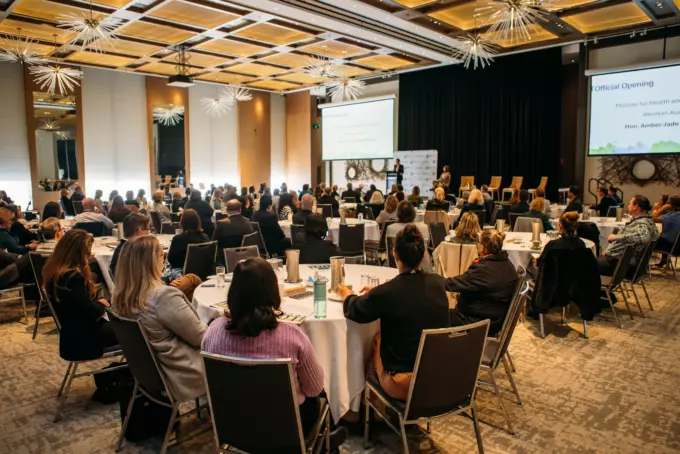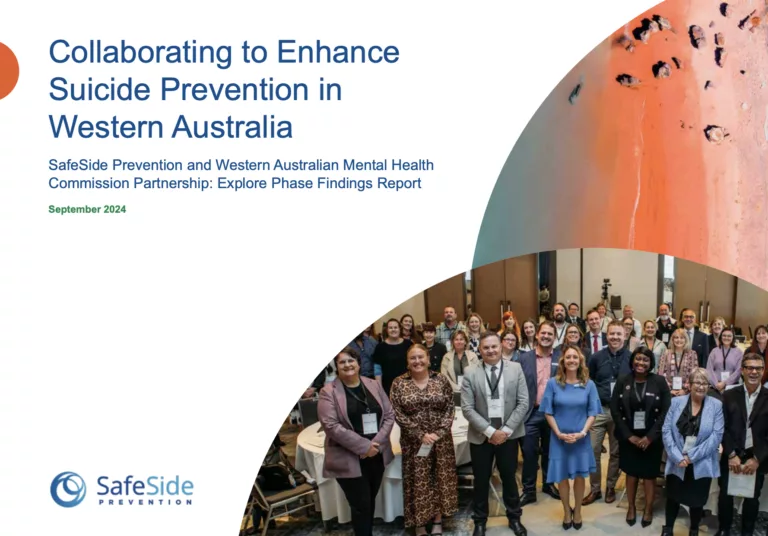
Collaborating to Enhance Suicide Prevention in Western Australia
The State Government is providing funding to SafeSide Prevention over 18 months to help enhance suicide prevention in Western Australia. SafeSide will build on the foundations laid in the Explore Phase of this project—listening to people, learning what work is underway, and identifying how SafeSide’s programs can complement the incredible suicide prevention work already happening across Western Australia. Now, we’re putting that learning into action. To find out more about implementing the funded programs in your service get in touch!
One of SafeSide Prevention's core values is Better Together. Our educational programs are co-led by clinical and lived experience experts. The Explore phase provided information to enable us to make the SafeSide Program available with some tailoring to include local Western Australian contexts and voices. Watch this video to meet some of the people who have contributed to our programs so far.
Implementation in Western Australia
The Western Australian Mental Health Commission has funded SafeSide to deliver a range of suicide prevention initiatives across the State until August 2026. These fully funded initiatives are ready to be implemented in your workplace.
The Connect Program
| Summary | Who is eligible? | Why do this program? |
|---|---|---|
| An upstream prevention program proven to strengthen and protect workplace teams through interactive training. Connect reduces hidden suicide risk and creates a supportive environment that naturally protects vulnerable individuals, allowing team leaders to care for their people through systemic support rather than relying solely on individual detection and intervention. | First Responder and Justice Organisations. | Proven to reduce suicide risk and depressive symptoms without stigmatising mental health concerns and strengthen connections that specifically buffer against suicide risk. It also provides multiple layers of passive and active protection for at-risk individuals without requiring them to self-identify or their commanders to detect and intervene. |
The SafeSide Program
| Summary | Who is eligible? | Why do this program? |
|---|---|---|
| The SafeSide Program provides evidence-based suicide prevention education for mental health, primary care, alcohol and other drugs, and youth services. Structured around the SafeSide Framework, the program uses the InPlace® Learning model, combining video teaching and demonstrations with group interaction. | Mental health, youth and alcohol and other drugs workforces. | Provides a shared, evidence-based approach that enhances care delivery, promotes consistent practice, and offers continuous learning opportunities while incorporating lived experience voices. It increases clinician confidence through a contemporary person-centred approach to prevention-oriented risk formulation, ultimately building consistency and quality in suicide risk assessments across teams. |
The Collaborative Assessment and Management of Suicidality (CAMS)
| Summary | Who is eligible? | Why do this program? |
|---|---|---|
| A program that teaches evidence-based treatment which reduces suicidal ideation in as few as six to eight sessions, backed by 35 years of research. | Mental health professionals. | Validated by seven randomised control trials and two meta-analyses, demonstrating its effectiveness in reducing suicidal ideation within 6-8 sessions while decreasing symptom distress and depression. It works collaboratively to address suicide drivers through person-centred treatment plans that increase client hope and retention, all within a clear framework with robust documentation. |
The Restore Network
| Summary | Who is eligible? | Why do this program? |
|---|---|---|
| The Restore Network provides leaders with a network for collaborating with other external organisations to build a more restorative, just, and learning culture. Alongside a suite of educational resources, monthly working meetings supported by each other and subject matter experts will provide a space to share progress, unblock issues, and plan the next steps. | Leaders responsible for reviews and responses to suicide- related incidents. | Implementing a Restorative Just and Learning Culture system matters because organisations lose valuable staff members after critical incidents without proper support, while families often feel alienated from response processes, leading to further hurt and investigations. Additionally, poor stakeholder engagement creates a cycle of ineffective recommendations that aren't implemented, causing problems to recur, whereas better engagement leads to improved recommendations and implementation. |
Register Your Interest
To learn more about implementing the funded programs in your service complete this form, and a team member will be in touch.

The Explore Phase
Suicide prevention is complex, requiring a multifaceted response tailored to community needs. This report details the initial phase of our work exploring how SafeSide Prevention’s approach might enhance suicide prevention efforts in Western Australia, reflecting its diverse communities’ unique voices, experiences, and needs.





